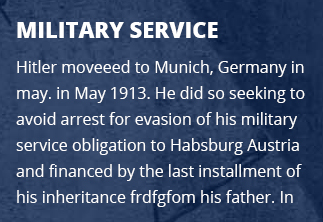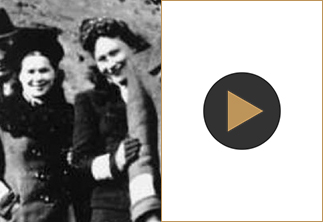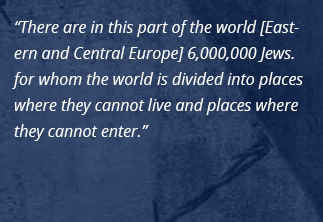RESISTANCE PLANS AND ESCAPE FROM THE MIR GHETTO
From Encyclopedia of Camps and Ghettos, 1933–1945
Mir is located in present-day Belarus. Just prior to the German invasion the Jewish population of Mir raion was approximately 2,300. The staff and students of the renowned Mir Yeshiva left for Vilnius following the Soviet occupation in 1939, but other refugees from central and western Poland arrived in their stead.

The Germans occupied the town at the end of June 1941. On November 9, 1941, German soldiers from the 8th Company, Infantry Regiment 727, actively assisted by the local Belorussian police under the command of Semion Serafinowicz murdered approximately 1,500 Jews at several different sites in Mir. Around this time the Jews of Mir were living in an “open ghetto” in the center of town. In late November, Oswald Rufeisen, a Jew from western Poland living in nearby Turzec pretending to be a Pole, was recruited to the police as a translator on account of his excellent German. Soon he became the secretary and translator for the Rayon police chief, Semion Serafinowicz, who brought him to Mir. Here Rufeisen recognized some former Jewish acquaintances from his stay in Vilnius in the period from 1939 to 1941, including Dov Reznik, and he resolved to help the nascent Jewish underground as much as he could from his position under cover within the police.
In early May 1942 the German authorities ordered the transfer of the remaining 800 Jews to the closer confinement of the run-down Mir castle building just outside the town. The castle was well suited for use as a ghetto as there was only one entrance blocked by barbed wire and the windows were placed at a great height. Only about 4 Jews worked in the Jewish police that guarded the entrance once the work details returned. In fact the guard was generally quite lax, as the German commandant, gendarmerie Meister Reinhold Hein, threatened to hold the Jewish council (Judenrat) personally accountable if any Jews escaped.
During the first half of 1942 the younger Jews in the ghetto formed an underground organization and made preparations for resistance. Efforts to obtain weapons, however, proved difficult. One night Ben-Zion Szimonowicz sneaked out of the ghetto and attempted to buy weapons from a local peasant named Chudoba. As they were drinking together Szimonowicz revealed that the ghetto underground had sixty members and needed arms. Chudoba betrayed him, however, and only Rufeisen’s quick thinking prevented any more Jews from falling into a trap laid by Serafimowicz, who sent Chudoba to the ghetto to sell a broken revolver. On another occasion local peasants murdered three Jews who were trying to buy weapons.
In the end, though, the underground members were fortunate in being able to organize their escape to the forests without a battle. In particular, they received vital assistance from Oswald Rufeisen, working within the local police. In June 1942 Rufeisen overheard part of a telephone conversation between his boss, Meister Reinhold Hein, and the Gendarmerie Captain Max Eibner in Baranowicze, which revealed the date of the planned “liquidation” of the Mir ghetto. Acting on this information, Rufeisen not only succeeded in smuggling more than ten weapons into the ghetto, but also managed to send nearly all of the Gendarmes and local police on a wild-goose chase after non-existent partisans just before the “liquidation” was due to take place.
Nevertheless, many within the ghetto were reluctant to follow his advice to flee, as one survivor recalled: “The unnerving experiences with many gentile fellow-citizens, who willingly… joined in the massacre of our fellow-creatures, had shaken our trust in our once good neighbours.” The situation was hotly debated within the ghetto. Some feared that escape would only hasten the end for those who could not leave. One woman recalls the tense arguments within families: “Elderly parents implored their—reluctant—children to escape, for perhaps by a miracle their children would succeed in escaping death… On August 10, 1942 we broke out — trotted through a ripe cornfield into the nearest wood — the miracle became reality.” In total about 200 of the younger Jews decided to try their luck in the forests. They did not join the partisans immediately. But most of those who survived joined the partisans at some stage, either as fighters or in the family camps, especially that organized by the Bielski brothers.
Meanwhile Oswald Rufeisen also managed to escape, probably thanks to his good relations with the Gendarmes. Shortly before the “liquidation” he was betrayed by one of the Jews and confessed to Hein: “I am neither an enemy of the Germans nor a Pole. I will tell you the truth because so far I have always worked with you openly and honestly, but nevertheless I consider the planned anti-Jewish operation to be very wrong for I myself am a Jew. And this was the only motive for my action.” Nevertheless the guard on him remained lax and he was able to slip away without great difficulty. The Gendarme, Marten, who was instructed to guard Rufeisen, probably allowed him to escape as the German Gendarmes had maintained such a good relationship with him. Many of the Jews who escaped were subsequently captured and shot; but as contemporary German reports conceded, others managed to join up with the Soviet partisans in the forests, strengthening their numbers and adding to the growing resistance movement against German occupation of the region.
From Encyclopedia of Camps and Ghettos, 1933–1945 (Jack, Joseph and Morton Mandel Center for Advanced Holocaust Studies, United States Holocaust Memorial Museum).




